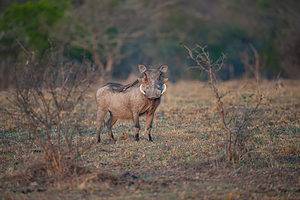The American alligator and the panther are official animals for the state of Florida. They are both formidable predators with different hunting tactics. Alligators have some pretty awesome features that make them great survivalists and apex predators in their habitats. The panthers are equally fearsome. They have a few tricks up their sleeves and are master predators. Have you ever wondered which of these ferocious predators would win if they were to engage in a fight? This post analyzes what might happen in an alligator vs. panther battle.
Alligators — Native To Florida
The name “alligator” has a Spanish origin. It is derived from “El Lagarto,” which means “lizard” in English. Alligators are large, semi-aquatic reptiles that look a lot like crocodiles. The main features that distinguish them are the alligators’ more U-shaped mouths and non-exposed teeth when the mouth is closed.
The American alligator is endemic to southeastern parts of the United States and has a pretty large population in Florida. The state has a bewildering 1.25 million individual alligators! These semi-aquatic monsters are solitary and very territorial. The biggest ones are even more defensive of their territories. Alligators eat fish, amphibians, birds, small mammals, and other reptiles (snakes and turtles). Surprisingly, these carnivores consume fruits, too, but on rare occasions.
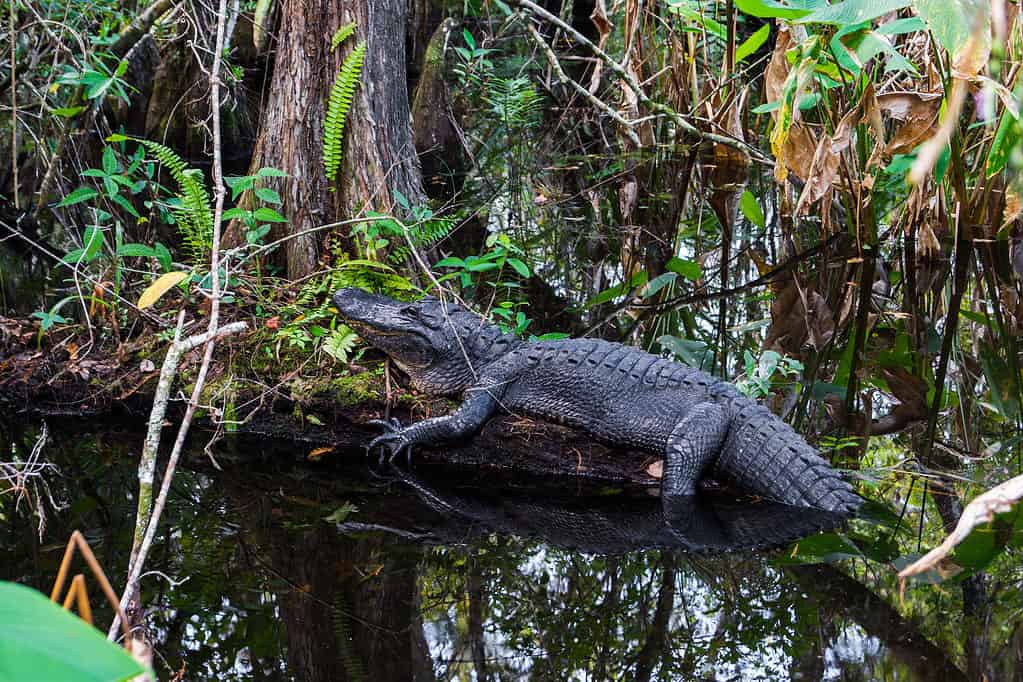
Florida is home to approximately 1.25 million individual alligators!
©timyee/Shutterstock.com
Panthers — Native To Florida
Our second contender, the Florida panther, is also native to Florida. The mammal is considered a close relative of mountain lions. However, the bent tail and distinct cowlick back fur set it apart from mountain lions. The panther has tawny-beige fur with a grayish belly and chest. Presently, the species is on the verge of becoming extinct and is on the list of endangered species in Florida.
The Florida panther is a skilled predator that primarily hunts medium-sized mammals, such as deer and raccoons, for food. It is the leading cause of white-tailed deer deaths in Florida. The panther’s carnivorous diet also includes birds and, occasionally, reptiles such as alligators and crocodiles. The animal is mostly solitary, except when it needs to mate or raise its kittens.
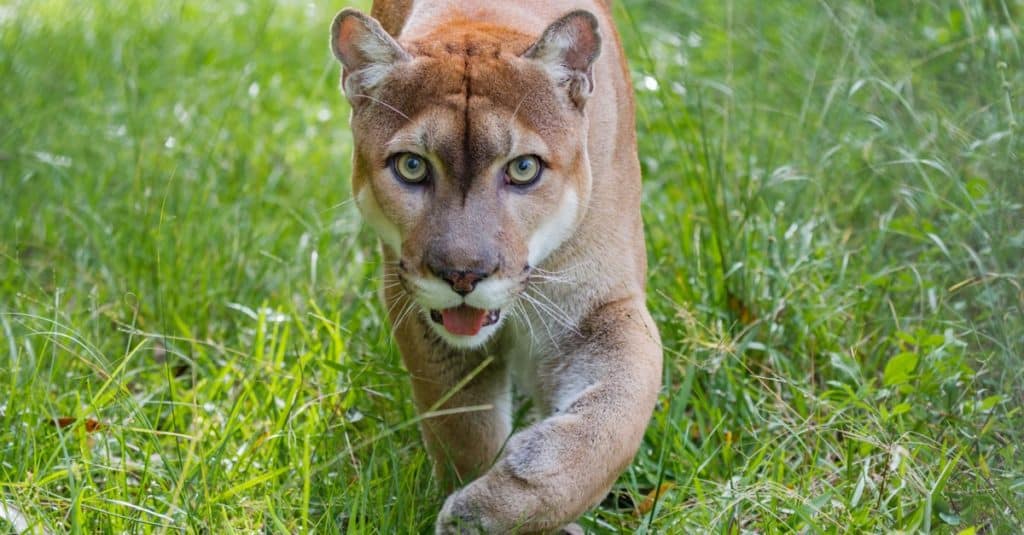
The Florida Panther is a skilled predator and the leading cause of white-tailed deer deaths in Florida.
©jo Crebbin/Shutterstock.com
Where Do Alligators and Panthers Live?
Alligators are abundant in the Florida Everglades. They are typically found in freshwater habitats. The alligators in Florida enjoy regions with warm temperatures. It is not uncommon to find these reptiles casually basking under the sun.
Wild Florida panthers live in the southwestern part of Florida. Wetlands, swamps, and upland forests provide the best living conditions for panthers. Besides Florida, their habitat range also extends to Louisiana and the Gulf Coast states.
How Long Do Alligators and Panthers Live?
On average, alligators have a lifespan of 35 to 50 years in the wild. However, they tend to live longer under human care. They can last up to 70 years in captivity.
The lifespan of panthers in the wild is about 20 years. While many male kittens hardly make it past five years, more females survive their juvenile years. The lucky males that can pass the six-year mark mostly live longer than ten years and more than most females.
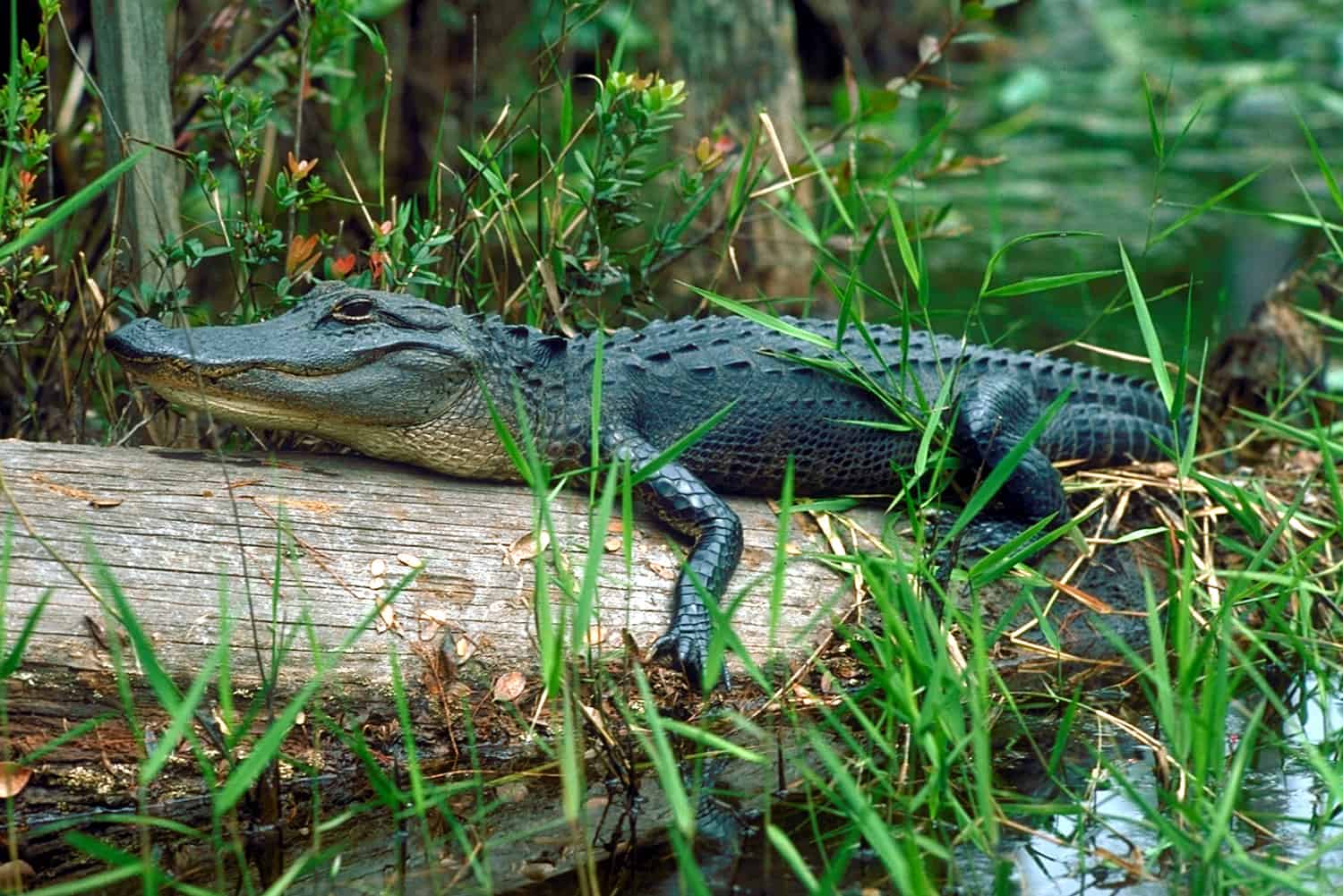
It is not uncommon to find alligators casually basking under the sun in southern Florida.
©Jonas N. Jordan, U.S. Army Corps of Engineers, Public domain, via Wikimedia Commons – License
Key Factors in a Battle Between an Alligator and a Panther
Alligator vs. Panther — Size
In both species, the male is usually larger than the female. A typical male American alligator is 11.2 feet long on average. On the other hand, the female’s body length is around 8.2 feet. Very large alligators can weigh up to 1,000 pounds.
An average panther’s size falls within the range of five to seven feet in length and 60 to 160 pounds in weight.
As far as size is concerned, the panther is no match for the alligator. If this were a boxing match, both animals would not even be in the same weight category considering the differences in their size.
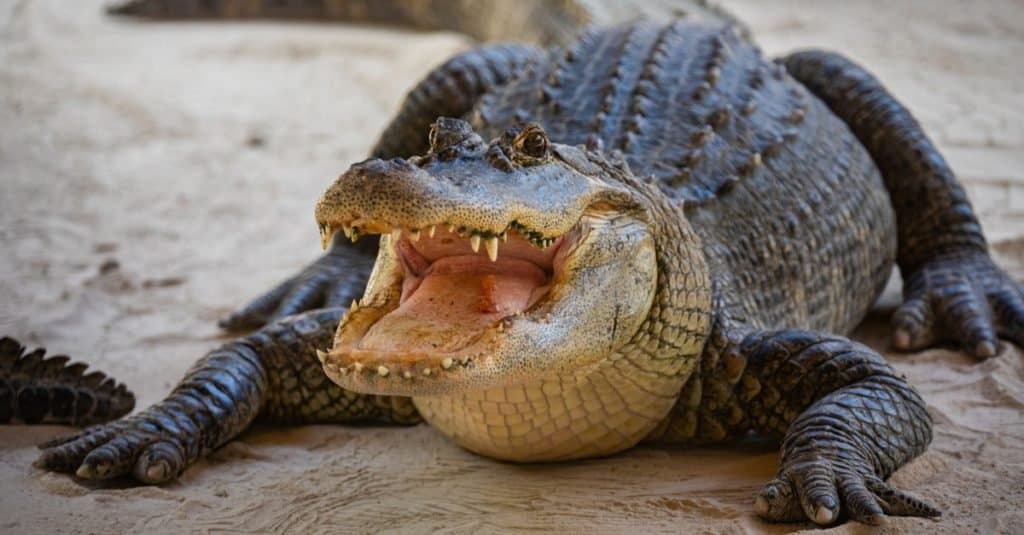
Very large alligators can weigh up to 1,000 pounds which gives them a considerable size advantage over the smaller panther.
©Mia2you/Shutterstock.com
Alligator vs. Panther — Speed and Movement
Alligators can reach a speed of up to 30 miles per hour on land, but they are not designed to run long distances. This is because they tire out quickly, The reptiles, however, have more stamina in water, even though they max out at 20 miles per hour. Apart from running and swimming, alligators are good climbers too.
Florida panthers have slightly higher land speeds compared to alligators. Their speed is typically around 35 miles per hour. Their running stamina is also not very impressive. The farthest the panthers can cover with their 35 mph speed is a few hundred yards.
The panther is known to be a superior jumper when compared to the alligator. The alligator is limited in its jumping abilities, only able to leap a maximum of about five feet, while a Florida panther is able to make a jump of up to 15 feet. Additionally, panthers possess exceptional swimming abilities, able to swim across fairly large water bodies.
Who would win based on speed and agility depends on where the battle takes place. On land, the panthers are the obvious winners. However, they’re no match for alligators in the water.

The Florida Panther has a speed and agility advantage on land over the alligator, with the ability to jump up to 15 feet.
©Vaclav Sebek/Shutterstock.com
Alligator vs. Panther — Senses
Alligators have good senses of sight, smell, and hearing. They also have well-adapted eyesight for night vision. One of the remarkable things about them is their extreme touch sensitivity; they can detect slight vibrations in the water around them.
Panthers, on the other hand, have great eyesight and smelling abilities. While they do not have a panoramic view, their vision field is still wide at 130 degrees. They can see well in dawn and dusk conditions. Florida panthers heavily rely on their sense of smell and sight to locate and capture their prey.
Both the alligator and panther have heightened senses that make them very adaptable. It’s a close tie here as far as their senses are concerned.
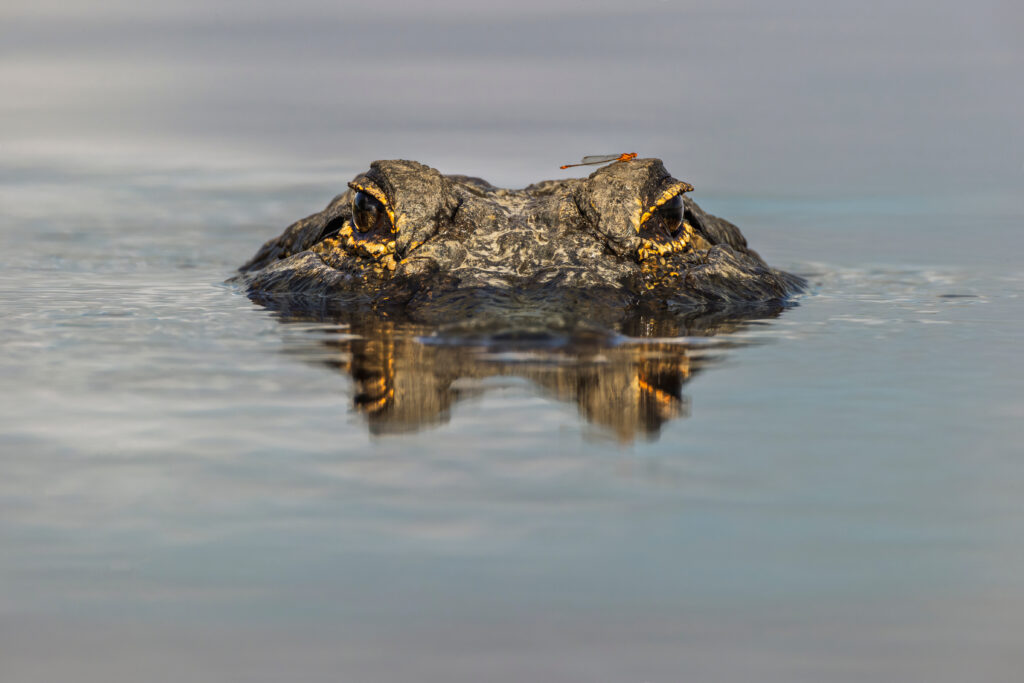
Alligators can detect slight vibrations in the water around them.
©Danita Delimont/Shutterstock.com
Alligator vs. Panther — Physical Defenses
Alligators sometimes use their tails to defend themselves from a predator’s attack. Small bony plates called osteoderms (or scutes) cover the back of the alligator, making it difficult for predator bites to penetrate.
Panthers, on the other hand, have different strategies for avoiding predators, such as fleeing or climbing trees. Additionally, the color of their fur allows them to blend in with their surroundings, making it harder for predators to spot them.

The Florida Panther has expert ways of fleeing or climbing trees to escape predators and can blend into their surroundings.
©Vaclav Sebek/Shutterstock.com
Alligator vs. Panther — Offensive Abilities
The dark brown color of alligators allows them to stay unnoticed in water, especially when they swim in swampy waters. This camouflage gives them an edge when sneaking up on unsuspecting prey.
American alligators have a powerful biting force—approximately 2125 PSI—thanks to the 80 teeth in their mouth and powerful jaw muscles. They also regrow their teeth very quickly and can have up to 3,000 teeth during their lifetime. Since they have no molars, they swallow their victims whole most of the time.
Being a cougar, the Florida panther has a much lower biting power of about 400 PSI. They have 30 teeth, including long canines for tearing flesh and bone-crushing premolars and molars. Panthers do not chase their prey for too long. They just aren’t built that way. They will rather stalk their prey and creep up on it in stealth mode. In one well-calculated move, they can grasp their prey with their retractable claws and make their kill.
Considering the significant difference in the bite forces of both animals, it’s easy to see who would win this round. The American alligator would bite right through a panther if it ever gets to attack first. Of course, the stealthy nature of the panther gives it a very good offensive chance too.
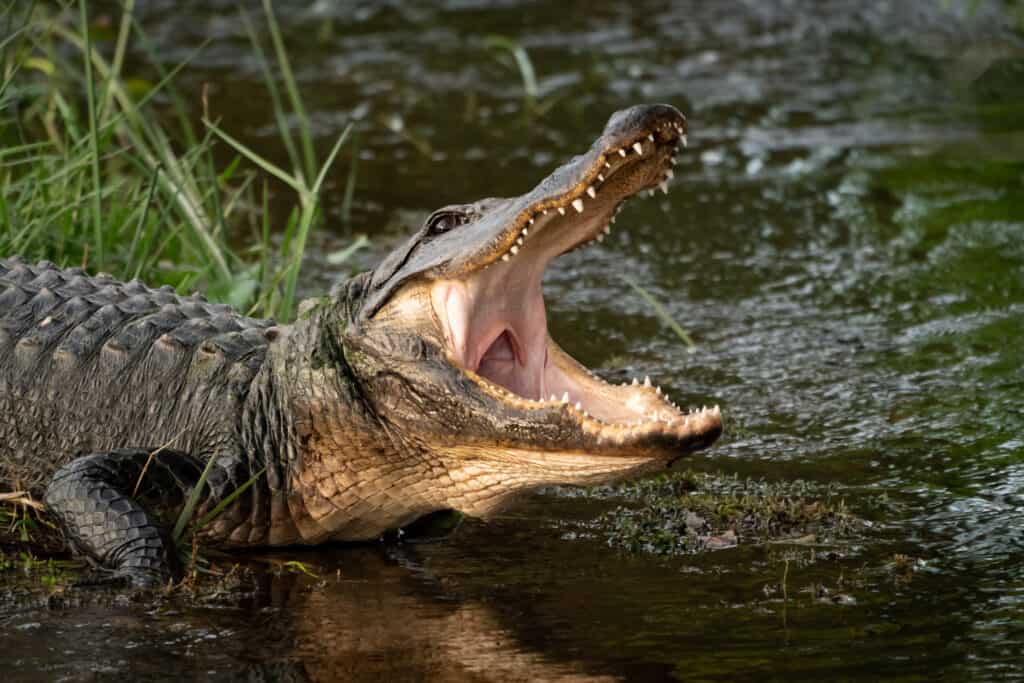
American alligators have a powerful biting force of roughly 2125 PSI which can inflict considerable damage.
©Deborah Ferrin/Shutterstock.com
The Winner in the Battle Between an Alligator vs. Panther
This particular fight will be intense. Things might even get more challenging with a larger alligator. In the anticipated battle-to-the-death struggle, the alligator has a higher chance of emerging victorious. Of course, the panther stands a good chance, too, and there are even a couple of real-life scenarios where the alligator vs. panther battle played out with the panther coming out on top.
Up Next
- Texas Showdown: Who Wins a Rattlesnake vs. Coyote Battle?
- Florida Showdown: Who Emerges Victorious in a Black Bear vs. Panther Battle?
- Texas Showdown: Who Is Victorious in an Alligator vs. Mountain Lion Battle?
The photo featured at the top of this post is ©
Thank you for reading! Have some feedback for us? Contact the AZ Animals editorial team.



